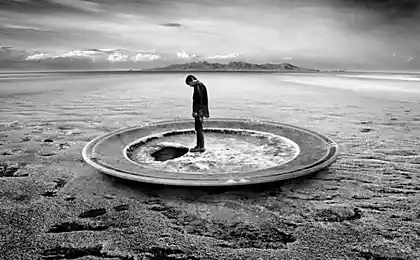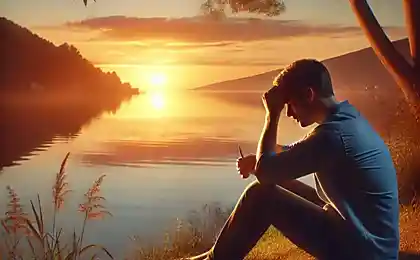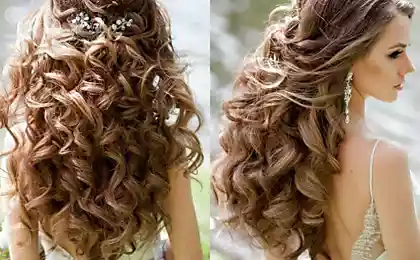322
(Un)beautiful self-justifying stories
A human being is a being who constantly tells himself and others stories. Stories about everything in the world, and these stories are designed to link our experience into some meaningful picture.
Our own actions need to be explained, that is, incorporated into the general logic of our lives. A person who acts illogically for himself or others and is unable to explain this illogicality is perceived as insane, and this opinion has its reasons.
When a person’s experience is not bound up in a whole story (“what preceded this – why / why I did it – how I did it – what consequences it led to”), then one can speak of a complete loss of the “I”, which fell apart into fragments that cannot be connected with each other.

I think that almost all of us have seen – and many of us remember – parents desperately ask their very young child, “Why did you do this?” – and the child is unable to explain it, because he is too small, his language is poor, and there is very little awareness of his own motives. But the child will grow up and learn to make up stories in response to the questions “why and why you did it.” Oh, these stories can sometimes be very sophisticated, with one goal in mind: to keep an image of yourself in the eyes of parents, other people, and your own.
We need stories that protect our selves from shame and maintain a basic sense of “I’m good and others think I’m good.”
Of all the stories people come up with to make sense of their lives, their actions, feelings and life events, the most sophisticated are those that focus on the conflicts that caused their participants a lot of real pain. In these self-justifying legends, we explain to ourselves and others who initiated evil and injustice, and who was the victim of this evil (of course, it is us).
Since ancient times, people have written the history of their peoples in such a way as to show that “we are good, others are bad”, and it does not matter that it is often those who considered themselves “offended” who seized foreign lands and enslaved entire peoples. The most curious example of this “historical justification” for me is L. Gumilev’s attempt to portray Genghis Khan and the Mongols as people who were almost forced to conquer half of the known world due to the fact that they were constantly offended by someone. And they would not be offended, so they would sit in their steppes. Almost no one will say, “We craved power, money, and we liked other people’s women – so we came and took them out of complete arbitrariness and lawlessness, like the last scum.”
Admitting your own mistakes or your own dark sides is so hard. twofold.
First, This recognition often hurts our positive attitude toward ourselves, which is based on the fundamentally mistaken idea that “good people don’t do bad things.” And if you admit to something that is in stark contrast to what is “good,” you no longer have the right to perceive yourself as a creature worthy of life – all you have to do is drown yourself in poisonous shame (“bad that I am”) – or actually take your life to rid the world of such a monster. Therefore, it is better for our own personality (assuming that we believe that “the good do not do bad”) to avoid admitting something exactly and unequivocally bad. And in reality, it turns out that almost all people do a lot of nasty things to themselves and to other people just because they want to look good, because the other option is fraught with toxic, poisonous shame, which is extremely difficult to cope with. On this is built almost the entire "gaslighting".
Secondly, We are social beings, and shame is born when we are rejected, when in response to our actions / mistakes / misdeeds, people turn away from us and do not want to do business with us. It is terrible when you confess to other people something unsightly (and this is very difficult, because first you need to admit it to yourself), and in response you hear the roar of the crowd “crucify him!”, “you are no longer our son / daughter!”, malignant “I told you that this will happen!” and other words that say that your pain and remorse do not feel that this pain will now be danced with all its value and will not be noticed. They won’t notice because when someone else breaks a leg, it’s nonsense, and when you break a nail, it’s a disaster. So lie, make up stories that nothing happened, that it wasn’t you at all, and that it was nothing.
In conflict situations where two or more people hurt each other, self-justifying stories center around two key questions: who is the abuser/victim and why the event that caused the pain occurred in the first place.
The most “bad” role is the role of the abuser, the one who caused the pain first, so the parties tell stories about how the other “first principle” (remember this kindergarten “what is he, he first started!”). And if we can sometimes separate these roles, then the answer to the question “why did this happen at all” is even more complex. Even those who formally admit that they have become “offenders” find excuses for this.
But the offended do not lag behind – the experience of “righteous anger” is one of the most sweet feelings for a person, because it balms the wounds and strengthens the feeling of “goodness”. For better pain relief, it is necessary that the abuser constantly suffers and feels his own pain – it is she, someone else’s pain, and is the main way to quench his own suffering (this is the basis of revenge). So it turns out that the abusers tend to reduce their moral responsibility (by alleviating shame), and their victims will try to maximize their moral integrity (by alleviating pain).
A person can be both the abuser and the victim at different times, but if we are in the same role, the experience of the person in the second becomes almost completely inaccessible – as if there is an impenetrable barrier between them. It’s amazing to see that as soon as one role changes, the story told by the same person changes.
How do abusers (i.e., those who admit to being the first to hurt others) reduce the internal dissonance between “I am good/I want to be good” and “I did something bad”? There are four main story-stories.
1) It can be argued that everything was done correctly.
Whatever I do is justified. The classic parental excuse: “I did it for your own good!” Or, “I lied to her for six years for her peace of mind,” “I did not consult with you so that you would not spoil anything,” etc. "She likes it, I can see it in her eyes." A version of this story: “Everybody does it.” For example, in response, “You lied to me!” – “Everyone is lying in this situation.” When George W. Bush was told that the United States used torture in its prisons, he said, “We don’t torture.” We are using alternative methods.”
2) You can recognize your action wrong, but find an excuse for it or reduce its significance.
The most popular is “I had no choice.”
Very often, abusers point to mitigating external circumstances: “In childhood, I myself was hurt,” “I recently had severe stress,” “I could not do anything about myself, something came over me.”
There is also an explanation of their behavior by the characteristics of the person who was hurt. It includes the classic “victimblaming” – “it’s my fault that we treated you badly.”
Finally, you can point out that others are even worse than you are, and you are nothing compared to others. This is the classic “and you have Negroes lynched!” in response to the indication of shortcomings, and “well, he beats, but he does not smoke, drink or cheat!”.
(3) If there is no possibility to deny or minimize responsibility for what happened, you can admit everything and try to quickly forget about what happened, hush it up.
“It’s just an episode,” “as much as you can talk about it – everything has already passed,” “Come on, I changed it only once, everything is already over, why remember it?” ?
(4) Denial that anything happened and doubts about the adequacy of the victim ("gaslighting").
In general, all efforts are made to remove the discrepancy between “I’m good – I do bad things”, and “I’m good” is not questioned.
Victims also make up stories, trying to make sense of what happened to them. It is important for a person who has been hurt to hear from the abuser (this is not a criminal offense!) four:
(a) recognition of the occurrence of pain;
(b) remorse for this fact;
(c) an explanation of the cause of the pain, without attempting to mitigate one's own responsibility;
(d) proposals for reparation, if possible.
This is expected by patients who have suffered from the mistakes of doctors, innocent people who have been convicted in court, spouses who have been cheated and lied to every day, residents of countries affected by external aggression – and many, many others.
Studies in American hospitals have shown that patients are less likely to sue if doctors admit their mistakes and apologize for them, and take measures to prevent them in the future. As a rule, the victims do not wait for anything, even point a. As one American judge who was proven to have sentenced an innocent man to 25 years in prison said, “Well, then he has to be guilty of something.” Absurd? Yeah. But it's all there is. Almost any Russian judge will sign it.
Faced with such a complete deafness to their pain, the victims are left face to face with their experiences and questions about “how could this have happened,” “what was he thinking,” and at the same time another key question: “How could this have happened to a good person like me?” And if the victim does not fall into self-accusation, then an anger is born, which quickly acquires the threatening features of the “righteous”, that is, convincing the person experiencing pain that suffering exalts him above others, gives him an indisputable moral purity that gives him the right ... to become offenders themselves. All the stories of revenge and turning victims into angry abusers are from here. And then someone else’s savageness becomes an excuse for his own savageness, and then “he first began to kill innocents!” gives permission to “I too will kill!” – as you can guess, those who suffer here are those who cannot protect themselves from “righteous anger.” And, for example, a son can get all the money from a mother who hates his father for violence. He'll get it just because he's a boy and looks like his father.
The trap of righteous anger is that it needs constant nourishment, because the self-esteem of the victim rests only on him. Many victims of injustice and inattention from loved ones, who are incomparable with real violence, nevertheless constantly heal their wounds, collect grievances and twist themselves, because giving up anger and revenge is tantamount to giving up moral rightness in such a situation. In the stories of the victims, their abusers are terrible monsters who cause pain not because of their delusions or mistakes, but because of their initially corrupt nature (“he is a psychopath, a maniac!” – such epithets are much more often awarded to not real psychopathic maniacs...).
The evil done is seen as uncaused. Everything good that was remembered about the offender is literally erased from memory, only the logical, integral and flawless black Satanic image remains, as false as the self-justifying angelic image of the offenders. And their own misdeeds and their own “achievements” as abusers are erased, because the victim needs self-justification just as much as the abuser. Why? Because apart from the erroneous idea that good people don’t do bad things or hurt loved ones, there’s another erroneous idea that admitting any of our own mistakes and shortcomings is tantamount to justifying the harm done to us. This is not so, but the offenders are already happily clinging to this idea to reduce the intensity of their own feelings and say “well, you see, it is also your fault / and that I hurt you!”. So they freeze in the clinch: both the one who caused pain and the one who experiences it are afraid of humiliation and dancing on the bones, if they recognize each other’s right to make mistakes.
Disputes about who started first and who is more guilty are the path to splitting into righteous and sinners, and do not lead to anything good if both sides still interact with each other for some reason.
How do you get out of the clinch? There are three ways, and all are unpleasant.
1. The abuser refuses to claim goodness, and draws attention to the fact that behind the anger and rage of the victim hides great pain, and the more rage – the more pain. Be prepared to try to humiliate, dance on the bones, try to bring to his knees - and yet apologize.
2. The victim refuses to constantly pump up his righteous anger, recalls situations when he was already an abuser himself and used all the same defenses that the abuser now uses. He talks about his pain directly.
If in both cases the importance of preserving one’s holy image for the parties is more important than the relationship, then the relationship will cease.
3. The most difficult, but also the most productive, way is for both sides to forgo self-justification, leave behind the question of who started and who was to blame, and agree on what steps they can take to resolve the situation.
“If you want to make peace with your enemy, you must work with your enemy to make it. And then he becomes your partner.” N. Mandela.
A man traveled many miles to consult a wise man. When he found him, he asked the guru, “What is the secret of a happy life?”
“Good decisions,” replied the wise man.
What will help me learn to make good decisions?
- Bad decisions.
So, no bad decisions anywhere...published
Author: Ilya Latypov
P.S. And remember, just by changing our consumption – together we change the world!
Join us on Facebook, VKontakte, Odnoklassniki
Source: tumbalele.livejournal.com/
Our own actions need to be explained, that is, incorporated into the general logic of our lives. A person who acts illogically for himself or others and is unable to explain this illogicality is perceived as insane, and this opinion has its reasons.
When a person’s experience is not bound up in a whole story (“what preceded this – why / why I did it – how I did it – what consequences it led to”), then one can speak of a complete loss of the “I”, which fell apart into fragments that cannot be connected with each other.

I think that almost all of us have seen – and many of us remember – parents desperately ask their very young child, “Why did you do this?” – and the child is unable to explain it, because he is too small, his language is poor, and there is very little awareness of his own motives. But the child will grow up and learn to make up stories in response to the questions “why and why you did it.” Oh, these stories can sometimes be very sophisticated, with one goal in mind: to keep an image of yourself in the eyes of parents, other people, and your own.
We need stories that protect our selves from shame and maintain a basic sense of “I’m good and others think I’m good.”
Of all the stories people come up with to make sense of their lives, their actions, feelings and life events, the most sophisticated are those that focus on the conflicts that caused their participants a lot of real pain. In these self-justifying legends, we explain to ourselves and others who initiated evil and injustice, and who was the victim of this evil (of course, it is us).
Since ancient times, people have written the history of their peoples in such a way as to show that “we are good, others are bad”, and it does not matter that it is often those who considered themselves “offended” who seized foreign lands and enslaved entire peoples. The most curious example of this “historical justification” for me is L. Gumilev’s attempt to portray Genghis Khan and the Mongols as people who were almost forced to conquer half of the known world due to the fact that they were constantly offended by someone. And they would not be offended, so they would sit in their steppes. Almost no one will say, “We craved power, money, and we liked other people’s women – so we came and took them out of complete arbitrariness and lawlessness, like the last scum.”
Admitting your own mistakes or your own dark sides is so hard. twofold.
First, This recognition often hurts our positive attitude toward ourselves, which is based on the fundamentally mistaken idea that “good people don’t do bad things.” And if you admit to something that is in stark contrast to what is “good,” you no longer have the right to perceive yourself as a creature worthy of life – all you have to do is drown yourself in poisonous shame (“bad that I am”) – or actually take your life to rid the world of such a monster. Therefore, it is better for our own personality (assuming that we believe that “the good do not do bad”) to avoid admitting something exactly and unequivocally bad. And in reality, it turns out that almost all people do a lot of nasty things to themselves and to other people just because they want to look good, because the other option is fraught with toxic, poisonous shame, which is extremely difficult to cope with. On this is built almost the entire "gaslighting".
Secondly, We are social beings, and shame is born when we are rejected, when in response to our actions / mistakes / misdeeds, people turn away from us and do not want to do business with us. It is terrible when you confess to other people something unsightly (and this is very difficult, because first you need to admit it to yourself), and in response you hear the roar of the crowd “crucify him!”, “you are no longer our son / daughter!”, malignant “I told you that this will happen!” and other words that say that your pain and remorse do not feel that this pain will now be danced with all its value and will not be noticed. They won’t notice because when someone else breaks a leg, it’s nonsense, and when you break a nail, it’s a disaster. So lie, make up stories that nothing happened, that it wasn’t you at all, and that it was nothing.
In conflict situations where two or more people hurt each other, self-justifying stories center around two key questions: who is the abuser/victim and why the event that caused the pain occurred in the first place.
The most “bad” role is the role of the abuser, the one who caused the pain first, so the parties tell stories about how the other “first principle” (remember this kindergarten “what is he, he first started!”). And if we can sometimes separate these roles, then the answer to the question “why did this happen at all” is even more complex. Even those who formally admit that they have become “offenders” find excuses for this.
But the offended do not lag behind – the experience of “righteous anger” is one of the most sweet feelings for a person, because it balms the wounds and strengthens the feeling of “goodness”. For better pain relief, it is necessary that the abuser constantly suffers and feels his own pain – it is she, someone else’s pain, and is the main way to quench his own suffering (this is the basis of revenge). So it turns out that the abusers tend to reduce their moral responsibility (by alleviating shame), and their victims will try to maximize their moral integrity (by alleviating pain).
A person can be both the abuser and the victim at different times, but if we are in the same role, the experience of the person in the second becomes almost completely inaccessible – as if there is an impenetrable barrier between them. It’s amazing to see that as soon as one role changes, the story told by the same person changes.
How do abusers (i.e., those who admit to being the first to hurt others) reduce the internal dissonance between “I am good/I want to be good” and “I did something bad”? There are four main story-stories.
1) It can be argued that everything was done correctly.
Whatever I do is justified. The classic parental excuse: “I did it for your own good!” Or, “I lied to her for six years for her peace of mind,” “I did not consult with you so that you would not spoil anything,” etc. "She likes it, I can see it in her eyes." A version of this story: “Everybody does it.” For example, in response, “You lied to me!” – “Everyone is lying in this situation.” When George W. Bush was told that the United States used torture in its prisons, he said, “We don’t torture.” We are using alternative methods.”
2) You can recognize your action wrong, but find an excuse for it or reduce its significance.
The most popular is “I had no choice.”
Very often, abusers point to mitigating external circumstances: “In childhood, I myself was hurt,” “I recently had severe stress,” “I could not do anything about myself, something came over me.”
There is also an explanation of their behavior by the characteristics of the person who was hurt. It includes the classic “victimblaming” – “it’s my fault that we treated you badly.”
Finally, you can point out that others are even worse than you are, and you are nothing compared to others. This is the classic “and you have Negroes lynched!” in response to the indication of shortcomings, and “well, he beats, but he does not smoke, drink or cheat!”.
(3) If there is no possibility to deny or minimize responsibility for what happened, you can admit everything and try to quickly forget about what happened, hush it up.
“It’s just an episode,” “as much as you can talk about it – everything has already passed,” “Come on, I changed it only once, everything is already over, why remember it?” ?
(4) Denial that anything happened and doubts about the adequacy of the victim ("gaslighting").
In general, all efforts are made to remove the discrepancy between “I’m good – I do bad things”, and “I’m good” is not questioned.
Victims also make up stories, trying to make sense of what happened to them. It is important for a person who has been hurt to hear from the abuser (this is not a criminal offense!) four:
(a) recognition of the occurrence of pain;
(b) remorse for this fact;
(c) an explanation of the cause of the pain, without attempting to mitigate one's own responsibility;
(d) proposals for reparation, if possible.
This is expected by patients who have suffered from the mistakes of doctors, innocent people who have been convicted in court, spouses who have been cheated and lied to every day, residents of countries affected by external aggression – and many, many others.
Studies in American hospitals have shown that patients are less likely to sue if doctors admit their mistakes and apologize for them, and take measures to prevent them in the future. As a rule, the victims do not wait for anything, even point a. As one American judge who was proven to have sentenced an innocent man to 25 years in prison said, “Well, then he has to be guilty of something.” Absurd? Yeah. But it's all there is. Almost any Russian judge will sign it.
Faced with such a complete deafness to their pain, the victims are left face to face with their experiences and questions about “how could this have happened,” “what was he thinking,” and at the same time another key question: “How could this have happened to a good person like me?” And if the victim does not fall into self-accusation, then an anger is born, which quickly acquires the threatening features of the “righteous”, that is, convincing the person experiencing pain that suffering exalts him above others, gives him an indisputable moral purity that gives him the right ... to become offenders themselves. All the stories of revenge and turning victims into angry abusers are from here. And then someone else’s savageness becomes an excuse for his own savageness, and then “he first began to kill innocents!” gives permission to “I too will kill!” – as you can guess, those who suffer here are those who cannot protect themselves from “righteous anger.” And, for example, a son can get all the money from a mother who hates his father for violence. He'll get it just because he's a boy and looks like his father.
The trap of righteous anger is that it needs constant nourishment, because the self-esteem of the victim rests only on him. Many victims of injustice and inattention from loved ones, who are incomparable with real violence, nevertheless constantly heal their wounds, collect grievances and twist themselves, because giving up anger and revenge is tantamount to giving up moral rightness in such a situation. In the stories of the victims, their abusers are terrible monsters who cause pain not because of their delusions or mistakes, but because of their initially corrupt nature (“he is a psychopath, a maniac!” – such epithets are much more often awarded to not real psychopathic maniacs...).
The evil done is seen as uncaused. Everything good that was remembered about the offender is literally erased from memory, only the logical, integral and flawless black Satanic image remains, as false as the self-justifying angelic image of the offenders. And their own misdeeds and their own “achievements” as abusers are erased, because the victim needs self-justification just as much as the abuser. Why? Because apart from the erroneous idea that good people don’t do bad things or hurt loved ones, there’s another erroneous idea that admitting any of our own mistakes and shortcomings is tantamount to justifying the harm done to us. This is not so, but the offenders are already happily clinging to this idea to reduce the intensity of their own feelings and say “well, you see, it is also your fault / and that I hurt you!”. So they freeze in the clinch: both the one who caused pain and the one who experiences it are afraid of humiliation and dancing on the bones, if they recognize each other’s right to make mistakes.
Disputes about who started first and who is more guilty are the path to splitting into righteous and sinners, and do not lead to anything good if both sides still interact with each other for some reason.
How do you get out of the clinch? There are three ways, and all are unpleasant.
1. The abuser refuses to claim goodness, and draws attention to the fact that behind the anger and rage of the victim hides great pain, and the more rage – the more pain. Be prepared to try to humiliate, dance on the bones, try to bring to his knees - and yet apologize.
2. The victim refuses to constantly pump up his righteous anger, recalls situations when he was already an abuser himself and used all the same defenses that the abuser now uses. He talks about his pain directly.
If in both cases the importance of preserving one’s holy image for the parties is more important than the relationship, then the relationship will cease.
3. The most difficult, but also the most productive, way is for both sides to forgo self-justification, leave behind the question of who started and who was to blame, and agree on what steps they can take to resolve the situation.
“If you want to make peace with your enemy, you must work with your enemy to make it. And then he becomes your partner.” N. Mandela.
A man traveled many miles to consult a wise man. When he found him, he asked the guru, “What is the secret of a happy life?”
“Good decisions,” replied the wise man.
What will help me learn to make good decisions?
- Bad decisions.
So, no bad decisions anywhere...published
Author: Ilya Latypov
P.S. And remember, just by changing our consumption – together we change the world!
Join us on Facebook, VKontakte, Odnoklassniki
Source: tumbalele.livejournal.com/























